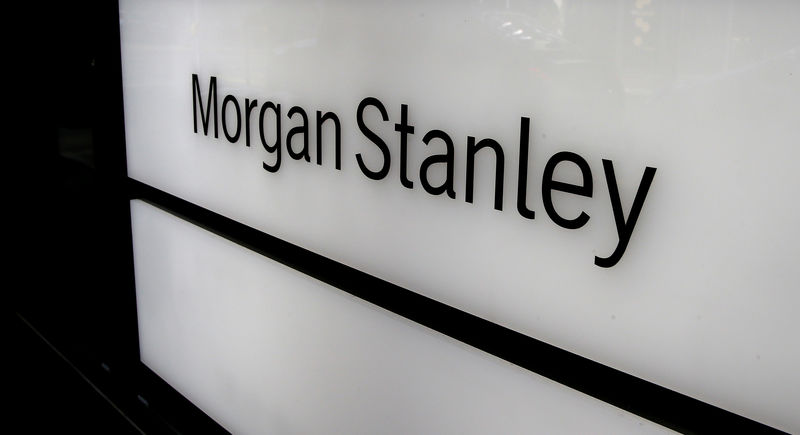© Reuters. FILE PHOTO: A screen displays the trading information for Morgan Stanley on the floor of the New York Stock Exchange (NYSE) in New York City, U.S., January 19, 2022. REUTERS/Brendan McDermid/File Photo
(Reuters) -Morgan Stanley may pay between $500 million and $1 billion to resolve a long-running U.S. probe into how it handled private stock sales, Semafor reported on Tuesday, citing people familiar with the matter.
The bank may also agree to tighten internal controls, as part of a potential settlement with the Department of Justice and the U.S. Securities and Exchange Commission (SEC), according to the report.
It, however, will likely not plead guilty to a crime, Semafor reported, adding that no individuals were expected to be criminally charged.
Spokespeople for Morgan Stanley and the Manhattan U.S. Attorney’s office declined to comment. A spokesperson for the SEC declined to comment, noting that the regulator “does not comment on the existence or nonexistence of a possible investigation.”
A settlement would resolve a long-running legal headache for the Wall Street giant, especially as CEO James Gorman is set to hand over the top job to Ted Pick next year.
Gorman has vowed to stay on as executive chairman to deal with the block trading probe. He told Reuters last week that he would be “in a position to help fix up on the loose ends,” without providing further details.
The bank had said earlier this year that it was cooperating with U.S. regulators over investigations into its block-trading practices and providing authorities with information.
Its upcoming quarterly earnings filing will use similar language from earlier filings about the block trading probe, a source familiar with the matter said.
It will not have any estimates about the size of any potential fines, said the source, who declined to be identified discussing regulatory matters.
Block trades are single orders for large trades, typically placed by institutional investors, which their broker-dealer drips into the market over time so as not to move the price.
Read the full article here












